 COURTESY OF DEBBEE, THE PHOTO SPEAKS FOR ITSELF.
COURTESY OF DEBBEE, THE PHOTO SPEAKS FOR ITSELF.At first it was called Armistice Day. On May 13, 1938, an act of congress declared it a legal holiday; "a day to be dedicated to the cause of world peace and to be thereafter celebrated and known as Armistice Day." In 1954, the holiday incorporated all our military personnel and was renamed, Veteran's Day.
Veteran's Day is usually observed with community parades, events and ceremonies that honor those who have fallen in battle as well as all who served. One of the great tributes to the service and sacrifice of our military, is the Tomb of the Unknown Soldier, also known as, "The Tomb of the Unknowns."
 THE ORIGINAL MARBLE SARCOPHAGUS INTERS THE REMAINS OF AN UNKNOWN SOLDIER FROM WWI. THE THREE SLABS IN FRONT CONTAIN THE REMAINS OF A SOLDIER FROM WWII, KOREA AND VIETNAM. THE INSCRIPTION READS, "HERE RESTS IN HONORED GLORY AN AMERICAN SOLDIER KNOWN BUT TO GOD."
THE ORIGINAL MARBLE SARCOPHAGUS INTERS THE REMAINS OF AN UNKNOWN SOLDIER FROM WWI. THE THREE SLABS IN FRONT CONTAIN THE REMAINS OF A SOLDIER FROM WWII, KOREA AND VIETNAM. THE INSCRIPTION READS, "HERE RESTS IN HONORED GLORY AN AMERICAN SOLDIER KNOWN BUT TO GOD."The tomb is located in Arlington National Cemetery, just outside Washington DC, in Virginia. Around the clock, every day of the year, this esteemed grave is guarded. It is the highest honor to be serve as a ceremonial sentinel. These select few volunteers are trained in a strict ritual with each gesture being of symbolic significance. Depending on the season or time of day and regardless of the elements, the changing of the guard occurs every thirty minutes, one hour or two hours...and is open to the public.
The Vietnam Memorial in Washington, is another venerated landmark that celebrates contributions made by the vets who fought in Southeast Asia. This aesthetic masterpiece, designed by a Yale University student Maya Lin, combines beauty with emotional power. It's three sections include, a "Three Soldiers Statue" a women's memorial and the best known part, the wall.
The wall is made of a reflective stone. Etched into it, are the 58,195 names of those killed or missing in action. The walls are sunk into the ground. The gentle ramp-effect made me feel like I was walking into an open grave. It is hard not to be touched by this feature nor is it easy to overlook the deliberate, reflective quality of stone which allows the visitor a simultaneous view of them self and the engraved names of the fallen...thus forcing them self to look deeply into them self while linking the past with the present. DEDICATED IN 1982, THE VIETNAM MEMORIAL IS NEAR THE LINCOLN MEMORIAL, IN THE CONSTITUTIONAL GARDENS, ADJACENT TO THE NATIONAL MALL.
DEDICATED IN 1982, THE VIETNAM MEMORIAL IS NEAR THE LINCOLN MEMORIAL, IN THE CONSTITUTIONAL GARDENS, ADJACENT TO THE NATIONAL MALL. Perhaps the most famous of all tributes to our armed forces is the Marine Corps War Memorial, also known as the Iwo Jima Statue. Located outside the gate at Arlington National Cemetery, this massive sculpture by Felix de Weldon was based the, "Raising the Flag on Iwo Jima," photograph by Joe Rosenthal.
Iwo Jima was the first WWII battle that look place on a Japanese home island. From February 19, 1945 to March 26, 1945 some of the fiercest fighting of the war took place. Despite the Americans eventual, decisive victory, a bloody price was paid. On the fifth day of the thirty-five day conflict, the momentum swung the Americans way when the highest peak, Mount Suribachi was taken. UNVEILED ON NOVEMBER 11, 1954, THIS MEMORIAL HONORS ALL THE MARINES WHO DIED IN DEFENSE OF OUR COUNTRY SINCE 1775. BUT IT'S GENERALLY ASSOCIATED WITH THE AMERICANS WHO STORMED IWO JIMA'S MOUNT SURIBACHI AND INCURRED INCREDIBLE LOSSES.
UNVEILED ON NOVEMBER 11, 1954, THIS MEMORIAL HONORS ALL THE MARINES WHO DIED IN DEFENSE OF OUR COUNTRY SINCE 1775. BUT IT'S GENERALLY ASSOCIATED WITH THE AMERICANS WHO STORMED IWO JIMA'S MOUNT SURIBACHI AND INCURRED INCREDIBLE LOSSES.
Ninety percentage of the men who charged up, were cut down. Of the small band of survivors, five Marines and a sailor hoisted the first American flag on Japanese soil. They were; Sgt. Michael Strank, Cpl. Harlon Block, PFC Franklin Sousely, PFC Rene Gagnon, Cpl. Ira Hayes and PM2 John Bradley.
Those men, with the help of Rosenthal's photo were immortalized, declared heroes and rushed stateside. To support morale on the home front, they barnstormed the country and participated in war bond drives and made personal appearances.
Unfortunately, this new-found fame was too much for one of the men, Ira Hayes, to handle. He would be arrested fifty-two times for public intoxication. At a public appearance when asked about it he once said, "I was sick. I guess I was about to crack up thinking about all my good buddies that were better men than me...and they're not coming back. Much less the White House, like me." After President Eisenhower lauded him in a 1954 speech, a reporter asked Hayes, "How do you like all the pomp and circumstance?" Hayes said, "I don't!"
 IRA HAYES, (JANUARY 12, 1923-JANUARY 24, 1955), THE REAR-MOST SOLDIER IN THE STATUE WAS A PIMA TRIBE, NATIVE AMERICAN, FROM ARIZONA .
IRA HAYES, (JANUARY 12, 1923-JANUARY 24, 1955), THE REAR-MOST SOLDIER IN THE STATUE WAS A PIMA TRIBE, NATIVE AMERICAN, FROM ARIZONA .
Back then the science of mental illness or even simple awareness of it, wasn't what it is today. So I guess it was easy for someone like Ira Hayes to slip through the cracks. Few people if any realized the great toll his war experience left on him. Then once the anguish took over, all that was left was the escapism of whiskey.
Nevertheless, in the midst of his downfall, he portrayed himself in the 1949 John Wayne movie, "THE SANDS OF IWO JIMA." But nobody understood why he shunned his heroic status and avoided the spotlight. No reached out and nobody understood. He was just labeled an oddball. His deep rooted psychological problems went undiagnosed and worsened. Ira Hayes descended to alcoholism and died at age 32, as a result of it.
Since his death, Hayes has also been depicted in art and film. "THE OUTSIDER," starring Tony Curtis in 1961 and "THE FLAGS OF OUR FATHERS," with Adam Beach, in 2006. In it, director Clint Eastwood suggested that Ira Hayes suffered from post-traumatic stress syndrome. Also the song, "THE BALLAD OF IRA HAYES," was written by Peter La Farge. It's most memorable cover was by Johnny Cash who took it to #3 on the country western charts, in 1964. BELOW IS AN EXCERPT FROM GEORGE CARLIN'S, "SHELL-SHOCK," ROUTINE. IT'S A GREAT ANTI-WAR STATEMENT AND SUPPORTIVE OF VETERANS.
BELOW IS AN EXCERPT FROM GEORGE CARLIN'S, "SHELL-SHOCK," ROUTINE. IT'S A GREAT ANTI-WAR STATEMENT AND SUPPORTIVE OF VETERANS.
In World War I, the term "shell shock" was used to describe battle-related mental difficulties. It was simple, honest and in two syllables, direct.
During WWII, the condition was changed to "battle fatigue." Hidden by four syllables, I guess they thought fatigue was a nicer word than shock.
In 1950, the Korean War went Madison Avenue. They squeezed out all the humanity, went totally sterile and buried the malady in eight syllables with, "operational exhaustion."
Thanks to a lot of lies and deceit, the Vietnam-era saw the very same condition renamed, "post-traumatic stress disorder." Still eight syllables but they added a hyphen to help bury the individuals pain, under the jargon.
I'll bet, if we still called it shell shock, some veterans would have gotten more help.
So on this uniquely numbered day of 11-11-11, when we pay homage to what Veteran's Day has become as well as its origin that marked the end of WWI, (on the eleventh hour, of the eleventh day, of the eleventh month, of 1918).
The bigger picture is, we shouldn't have to wait for holidays to appreciate all the Americans who were ever killed, listed as missing in action or served. However, while we can see the disfigurements and paralysis that our servicemen and women come home with, please help, honor and respect those who suffer mentally and emotionally too.







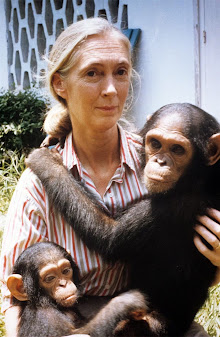
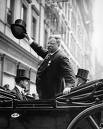




































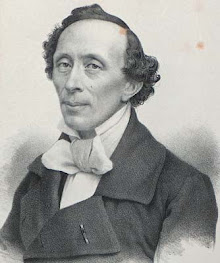


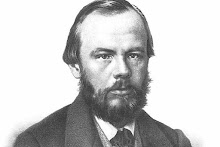



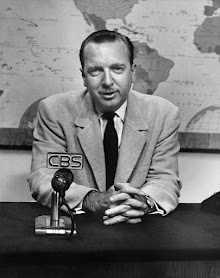































































































































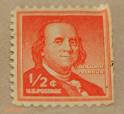



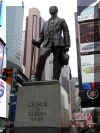





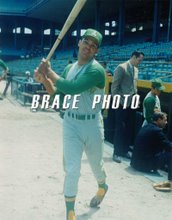




1 comment:
I really enjoyed this blog Steve, and thanks for the shout out. --- Debbee
Post a Comment